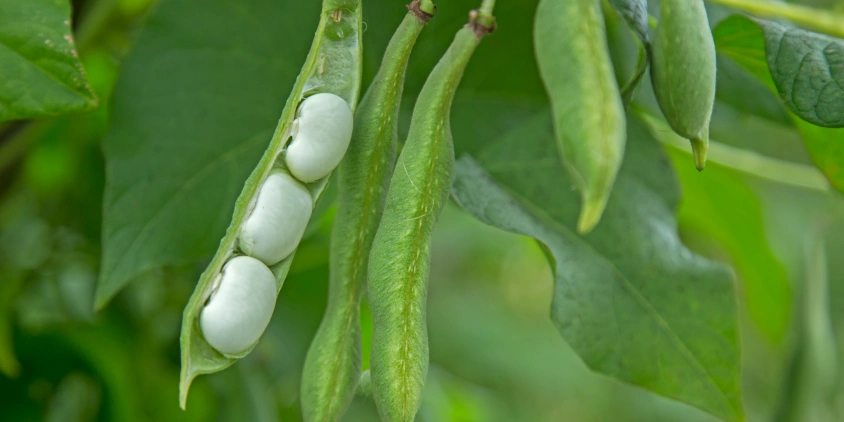
Growing Beans: Crop Success From Planting To Harvest
In a good field and with careful maintenance, growing beans can yield substantial profits. The good field for bean growing is one that receives enough sunlight and has well-drained soil. Careful maintenance means adequate irrigation, sparing fertilizer use, timely (or better, preventive) disease and insect control, and weed elimination. This doesn’t appear to be a huge list of requirements. Plus, you can get assistance with all of this from modern technologies like remote field monitoring and precision farming. With crop popularity on the rise, both existing and new farmers stand to gain from learning the best ways to grow beans.
Types Of Beans To Grow
The common bean is a legume that comes in many varieties. But all of them fall at least into one of three types of crop by use:
- snap (seeds consumed with pods);
- shell (seeds consumed while still young);
- dry (seeds consumed after fully maturing).
Some cultivars are appropriate for all three applications; you’ll just need to choose how long to grow them before harvesting beans.
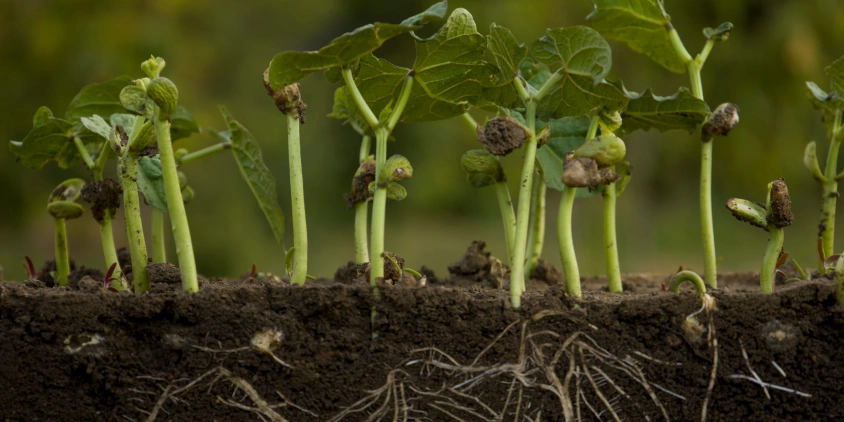
What Conditions Do Beans Need To Grow Well?
Beans, not finicky for growing conditions, yield abundantly throughout the world. But what conditions make growing them the most successful? Let’s examine this question more closely.
Sunlight
The plant requires sunlight for no less than six hours daily. Plants grown in full sun are less likely to suffer from fungal infections. To avoid overshadowing legumes, ensure there are no tall bushes and trees around.
On the other hand, plants can suffer from heat stress if exposed to too much direct sunlight. When these plants, adapted to milder growing conditions, are subjected to heat stress, it drastically reduces their yield and nutritional value.
They are widely cultivated in tropical and subtropical climates and are adaptable to a variety of other climates .
Water
The crop normally demands 1 inch (2.5 cm) of water weekly. Mulching can help keep the soil moist for longer. If the soil is dry at a depth of about 1 inch (2.5 cm), it is time to water. Sufficient watering is particularly important during the flowering stage. To avoid soil-borne diseases, it is best to employ drip irrigation so that soil does not splash onto the foliage.
Crop monitoring can help you manage irrigation more precisely. Use the NDMI index and the Soil moisture feature to determine when and how much to water your plants and schedule irrigation accordingly.

EOSDA Crop Monitoring
Performing fields analytics based on relevant satellite data to ensure effective decision-making!
Soil
With proper drainage, beans may be grown in almost any soil type, with varying degrees of success. Their ideal soil pH ranges from 6 to 7, which is somewhere in the middle of acidic and neutral.
Growing beans is most productive in clay soil or silt loam soil. Slightly acidic loams rich in nutrients will do the best.
Do not grow these legumes at the same site every year to avoid an accumulation of soil-borne infections. So what to grow after beans? Growing onions, tomatoes, squash, or any other heavy feeder will be a good strategy. With the use of the Crop rotation tool on our platform, you can easily design and execute effective crop rotation programs throughout the years.
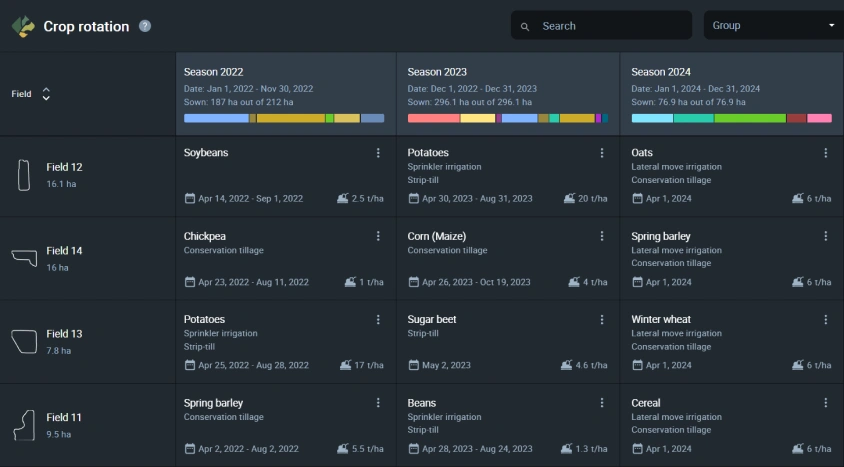
How To Plant Beans
Not planting too early is the golden rule of successful crop production. Seeds planted too early can rot in cool soil. On top of that, seedlings require warmth to grow healthy. So bean planting season usually begins in the spring after the risk of frost has gone.
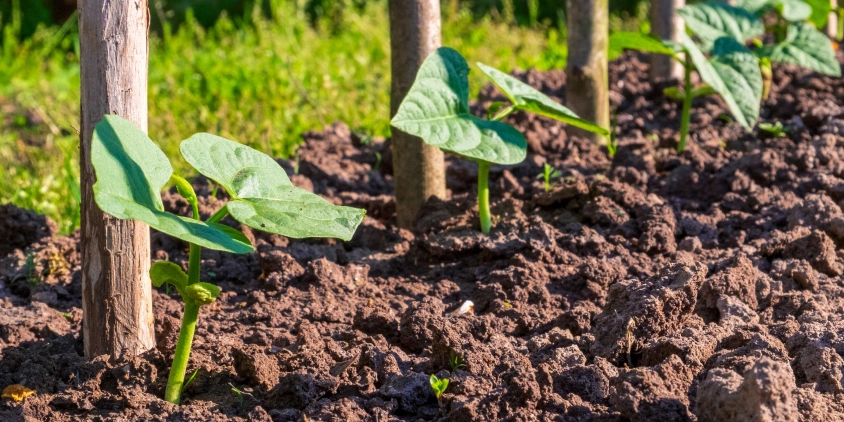
For the majority of varieties, it’s best to plant the seeds approximately 1 inch (2.5 cm) deep. Space your rows of bush varieties 2.5–3 feet (0.8–0.9 m) apart, and sow bean seeds 1–2 inches (2.5–5 cm) apart. Once the seedlings have germinated, thin them to 3–4 inches (8–10 cm) apart in the stand.
To ensure uniform crop growth and the highest possible harvest, variable rate planting is the way to go. Segmenting the field and adjusting seeding rates accordingly is made simple with productivity maps in EOSDA Crop Monitoring. These maps, derived from vegetation data from past growing seasons, visualize the productivity of your fields. Pay special attention to areas with lower vegetation, where you may need to raise the seeding rates.
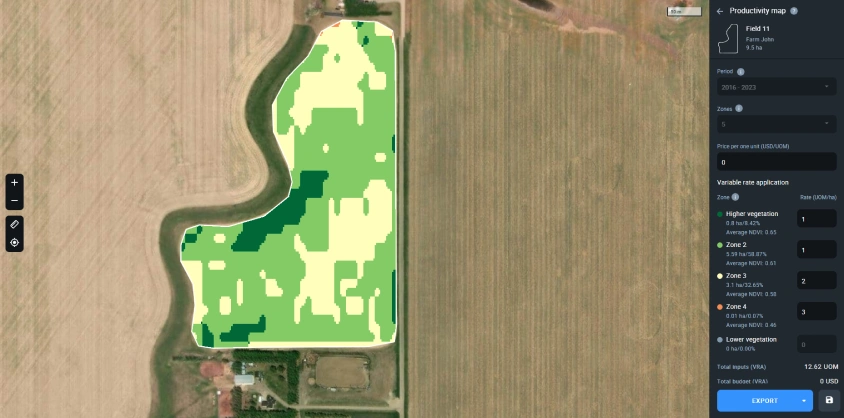
Care And Maintenance Tips For Growing Beans
Growing beans typically does not necessitate any extra maintenance effort. As with any other crop, it’s crucial to effectively combat pests and diseases and prevent weeds from growing to ensure crop success. Also, be sure to use nitrogen sparingly when fertilizing.
Light Fertilizing
Legumes can get by with very little fertilizer because they are not heavy feeders. Applying a small amount of fertilizer to the top 2–3 inches (5–8 cm) of soil either the day before bean planting or right at planting will provide them with nearly all the nutrients they need. Mineral fertilizer in the 5-10-10 NPK ratio, applied at a rate of 3-4 pounds per 100 square feet (14 to 20 kilograms per 100 square meters), will be sufficient for most soils . Another option is to use a comparable amount of organic fertilizer, like aged manure or compost.
Pest And Disease Control
Different pests attack different crop varieties. Stem nodule poses the greatest threat, especially during wet growing seasons. When bean weevil larvae feed on the root nodules, they inflict severe damage to spring crops. Blackflies are another serious concern, particularly if they establish colonies before the plants bloom.
Although pests in beans vary from one growing season to another, there are ways to make your plants overall healthier and more resistant by using cultural practices. For example, to get rid of insects that overwinter in your fields, till the soil and rotate crops.
Of the many diseases that can infect growing beans, downy mildew is among the most common; it usually strikes spring crops. Fungicides are used to treat the condition. Leaf and pod spot, the most dangerous for winter crops, may be prevented through fungicide seed treatment.
The Disease risk tool on our platform forewarns farmers about potential threats. By being alerted to the possibility of infection in their crops, they can respond quickly enough to prevent or minimize yield losses. Besides, this crop monitoring feature helps insurance companies save money on risk assessment and damage appraisal for extensive farmlands.
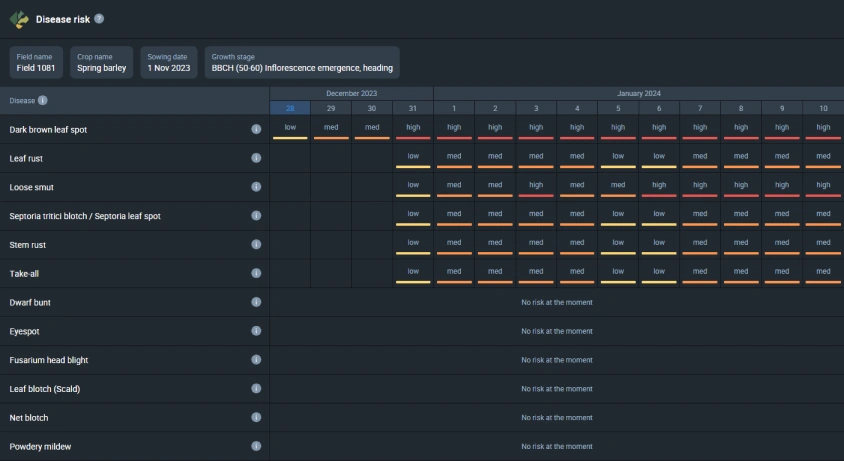
Eliminating Weeds
Weeds will be less likely to appear in a row if there is a dense crop stand. To further reduce the likelihood of weed development, mulch the soil to a depth of 3–4 inches (8–10 cm). If weeds persist, shallow cultivation done regularly can help get rid of them. Beans grow both taproots going deep into the soil and lateral roots located closer to the soil’s surface, so it’s critical to avoid deep cultivation.
How Long Does It Take For Beans To Grow?
Bush beans grow somewhat faster than pole ones; the former takes 50–55 days till harvest time, while the latter takes 55–65 days. Although various cultivars have varying maturity rates, the typical time to maturity and seed development is under two months. Climate and cultivar determine the exact time to grow, which ranges from 45 to 75 days.
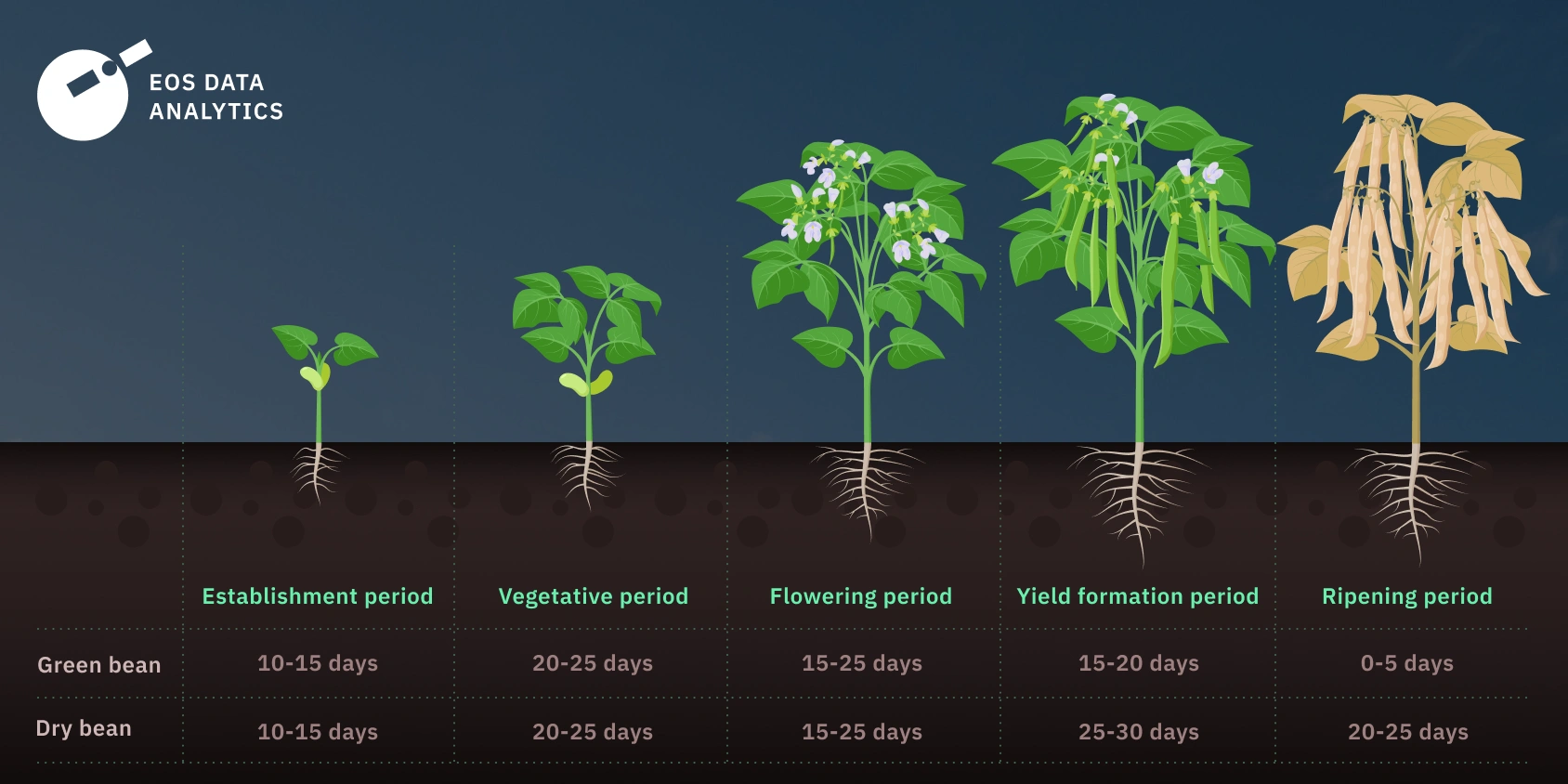
When And How To Harvest Beans
Picking beans takes place in one of three stages, corresponding to the three types of crops by use. Let’s see when to harvest each type of beans:
- Snap. Pods are delicate, and the seeds haven’t begun to swell.
- Shelling. The pod has turned a different color, and the seeds have inflated, but they haven’t dried yet.
- Dry. The seeds within the dried, brittle pods are firm.
It’s best to pick beans before the onset of frost. They are either harvested by swathing or using a combine harvester. With some effort and know-how, growing beans will be a rewarding endeavor for any farmer looking to diversify their crops and reap the benefits of this versatile plant.
About the author:
Vasyl Cherlinka is a Doctor of Biosciences specializing in pedology (soil science), with 30 years of experience in the field. He attended the engineering college in Ukraine and received his degree in agrochemistry, agronomy and soil science in the Chernivtsi National University. Since 2018, Dr. Cherlinka has been advising EOSDA on problems in soil science, agronomy, and agrochemistry.
Recent articles

Transition Guide From Sentinel Hub EO Browser To EOSDA LandViewer
Need an EO Browser alternative that’s just as familiar but more flexible? EOSDA LandViewer offers free recent imagery, a vast satellite data archive, and advanced analytical tools.
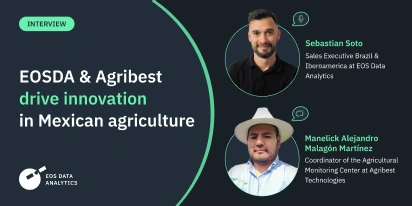
EOSDA & Agribest: Driving Agtech Growth In Mexico
In this insightful interview, Agribest shares how its collaboration with EOSDA is shaping Mexico’s agricultural future, with a focus on profitability, sustainability, and technology.

Top Ready-Made Agriculture Tools & Softwares for 2025
Agriculture softwares are silent partners in the field, working tirelessly behind the scenes to support farmers with insights and precision to cultivate sustainable agricultural ecosystems.